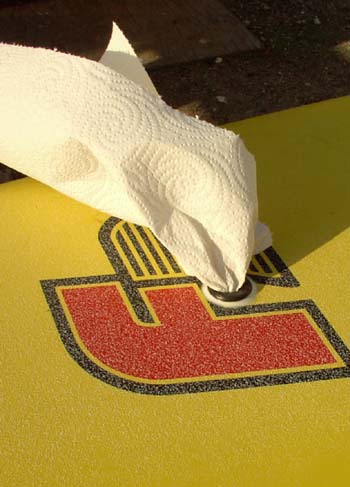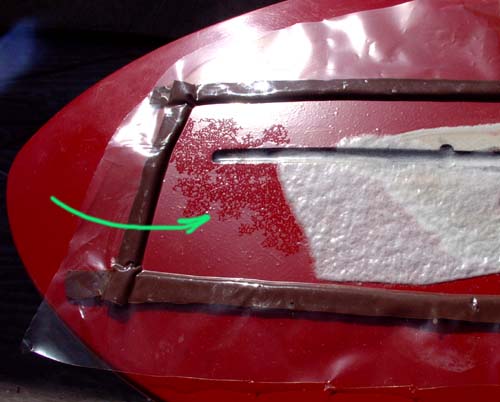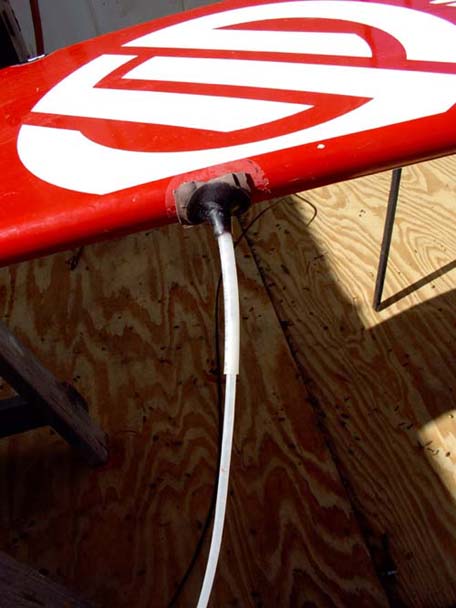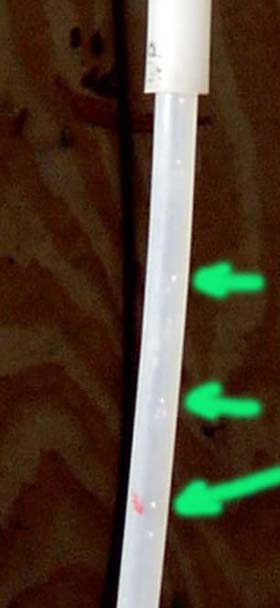|
| |
| Extracting Water from the Board
|
|
| Evaporation is the key to home
remedies Picture a pot of water on the stove.
It will boil dry faster if you turn up the heat; if you use a shallow, big
diameter pan, rather than a tall, narrow one; and if you open the window
nearby. Same with your board - sort of:
Maximize the water's mobility! Put the wet board into
a warm space. Don't overdo it, though, lest you add heat problems to your
moisture problems. 110 degrees F would be about the warmest you can safely
go.
Maximize the surface area! Twirl a paper towel to a
point loosely, stuff into the vent fixture or the wound with a tooth pick,
making sure there is contact with the EPS foam, fan out at the top.
Maximize the dissipation! Point a fan at the wound or
vent fixture.
Which way around? Moist air is lighter than dry
air. For the most efficient drying, then, the wound (or vent fixture) should
be pointed up.
|
 |
| Centrifugal Forces
The Spinner. I don't have one. The principle makes a
certain amount of sense, but the results seem wanting. The two boards I got
my hands on after they had been spun "dry" yielded better than 1/2# of water
each on the vacuum.
Its a charming idea in a Rube Goldbergian way - but
make sure to tie up the dog! (I'd like to think that my cats would be too
smart to chase after the rotating board :)
|
| Dehumidifying
Drying air by precipitating its moisture on a cool
surface
I am working on converting one of my storage rooms into
a dehumidifying space. The (limited) experiments I have conducted with
dehumidifyers indicate that the process is slow (due to the small
area of exchange) and best suited to remove the last small vestiges of water
from a board.
|
| Vacuum Drying
My preferred weapon
By creating a partial vacuum on the exterior of the
board, the steam pressure of the water inside becomes greater than the
exterior pressure. This causes the water to migrate to the surface, from
where it gets carried into a generous, baffled trap, ensuring that it will
not get into the pump. |
 |
Careful adjustments of vacuum levels and ambient
temperature cause outflow of liquid water, as well as speed evaporation,
without crushing the board. Well, there was a bit of a learning curve here,
with exuberant heating leading to the collapse of an Airex-sheathed board (Airex
being quite thermoplastic). The owner was most gracious, though - thanks,
Peter Landsberg!!
What usually starts as an impressive flow, dwindles away
to only trace amounts as low moisture concentrations are achieved.
Given a recent intake of water, I can generally remove
enough moisture to read zero on the moisture meter. The longer the water has
been in the core, the less complete the evacuation.
While substantially faster than any of the above
methods, vacuum-drying can take months, if the water had a chance to migrate
into the EPS beads: a Northshore Maui board with over 6# of water in the
core for half a year, took 5 months to shed 5 1/2#.
Don't wait!!
|

 |
|
return to
water, water everywhere |
|